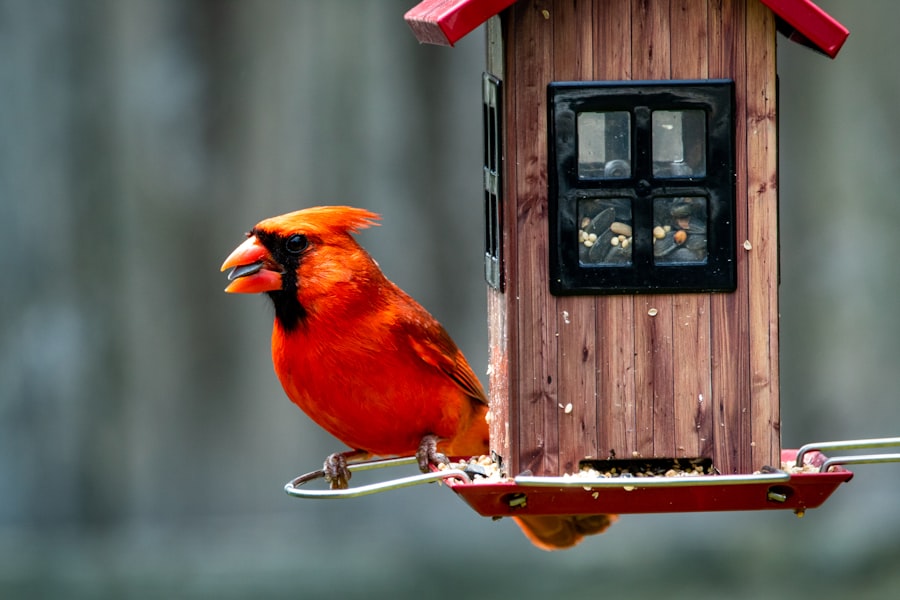Keeping chickens in urban and suburban areas has gained popularity in recent years as individuals seek to establish a closer connection to their food sources and adopt more sustainable lifestyles. However, many local councils have implemented regulations to ensure responsible and considerate chicken-keeping practices. These regulations are designed to safeguard the welfare of chickens and protect the well-being of the surrounding community.
Prospective chicken keepers should familiarize themselves with these regulations before beginning their chicken-keeping endeavors. Local council regulations for keeping chickens typically address several key areas. These include restrictions on the number of chickens permitted, specifications for coops and runs, measures for noise and odor control, health and safety guidelines, permit and inspection requirements, and consequences for non-compliance.
By understanding and adhering to these regulations, chicken keepers can ensure they are making a positive contribution to their community while enjoying the numerous benefits associated with keeping chickens.
Table of Contents
Key Takeaways
- Council regulations govern the keeping of chickens in urban and suburban areas
- Requirements for keeping chickens include limits on the number of birds and distance from neighboring properties
- Coop and run specifications include minimum space requirements and predator-proofing measures
- Noise and odor control measures are necessary to minimize impact on neighbors
- Health and safety guidelines cover issues such as disease prevention and waste management
- Permits and inspections may be required to ensure compliance with regulations
- Non-compliance with regulations can result in fines, removal of chickens, or other penalties
Requirements for Keeping Chickens
Understanding Council Restrictions
Many local councils have rules in place that dictate the maximum number of chickens you can keep, typically ranging from 2 to 6. This limitation is intended to prevent overcrowding and ensure that the chickens receive proper care and attention.
Guidelines for Chicken Types and Roosters
Some councils may have specific guidelines regarding the breeds of chickens allowed, as well as restrictions on keeping roosters due to their potential for noise disturbances.
Obtaining a Permit or License
In addition to limitations on the number and type of chickens, some councils may require chicken keepers to obtain a permit or license before keeping chickens on their property. This permit may involve an application process and a fee, and it is essential to ensure that all necessary paperwork is completed before bringing chickens onto your property.
By understanding and adhering to these requirements, chicken keepers can ensure that they are in compliance with local regulations and can enjoy the benefits of keeping chickens without any legal issues.
Coop and Run Specifications

Council regulations often include specific requirements for the construction and maintenance of chicken coops and runs. These specifications are designed to ensure that the chickens have a safe and comfortable living environment, while also minimizing any potential negative impacts on the surrounding community. Coop and run specifications may include guidelines for the size of the coop and run, as well as requirements for ventilation, lighting, and predator-proofing.
The size of the coop and run is an important consideration, as it directly impacts the welfare of the chickens. Council regulations may specify minimum square footage requirements for both the coop and the outdoor run, with the goal of providing adequate space for the chickens to move around and engage in natural behaviors. Additionally, regulations may require that coops be constructed with durable materials and proper insulation to protect the chickens from extreme weather conditions.
In addition to size requirements, council regulations may also include guidelines for maintaining cleanliness and hygiene within the coop and run. This may involve regular cleaning and disinfection protocols to prevent the buildup of odors and potential health hazards. By adhering to these coop and run specifications, chicken keepers can ensure that their chickens are provided with a safe and comfortable living environment while also minimizing any potential negative impacts on the surrounding community.
Noise and Odor Control
One of the primary concerns associated with keeping chickens in urban and suburban areas is the potential for noise and odor disturbances. To address these concerns, many local councils have regulations in place to control noise and odor emissions from chicken coops and runs. These regulations are designed to ensure that the surrounding community is not unduly impacted by the presence of chickens, while also protecting the welfare of the chickens themselves.
Noise control regulations may include restrictions on the keeping of roosters due to their loud crowing, as well as guidelines for minimizing noise disturbances from hens. This may involve measures such as soundproofing the coop or limiting outdoor access during early morning hours when noise disturbances are most likely to occur. Additionally, some councils may have specific quiet hours during which noise from chickens must be kept to a minimum.
In addition to noise control, odor control regulations may also be in place to minimize any potential unpleasant smells associated with chicken keeping. This may involve guidelines for proper manure management, such as regular cleaning and composting of waste materials. Additionally, some councils may have restrictions on the use of certain materials, such as straw or wood shavings, which can contribute to odors if not managed properly.
By adhering to these noise and odor control regulations, chicken keepers can ensure that they are being considerate neighbors while also providing a healthy environment for their chickens.
Health and Safety Guidelines
Council regulations regarding the keeping of chickens often include specific health and safety guidelines to ensure that both the chickens and the surrounding community are protected from potential hazards. These guidelines may cover a range of issues, including disease prevention, pest control, biosecurity measures, and emergency preparedness. Disease prevention is a key consideration in chicken keeping, as certain diseases can pose a risk to both chicken populations and human health.
Council regulations may include guidelines for vaccination protocols, as well as recommendations for regular health checks by a qualified veterinarian. Additionally, biosecurity measures such as limiting visitor access to the coop and run area may be recommended to prevent the spread of diseases between flocks. Pest control is another important aspect of maintaining a healthy environment for chickens.
Council regulations may include guidelines for preventing and managing common pests such as rodents, flies, and mites. This may involve measures such as regular cleaning and disinfection of the coop and run, as well as proper storage of feed and bedding materials to prevent infestations. Emergency preparedness is also a key component of health and safety guidelines for chicken keepers.
Council regulations may include recommendations for developing an emergency plan in case of natural disasters or other unforeseen events. This may involve having a designated evacuation plan for the chickens, as well as ensuring access to necessary supplies such as food, water, and medical supplies. By adhering to these health and safety guidelines, chicken keepers can ensure that they are providing a safe and healthy environment for their chickens while also minimizing any potential risks to the surrounding community.
Permits and Inspections

Why Permits are Necessary
In many areas, keeping chickens requires obtaining a permit or license from the local council. These permits are typically issued after an inspection of the property to ensure that it meets all relevant regulations regarding chicken keeping. The purpose of these permits is to ensure that chicken keepers are aware of their responsibilities and are able to provide a suitable environment for their birds.
The Inspection Process
The inspection process may involve a council representative visiting the property to assess the coop and run, as well as other aspects of the chicken-keeping setup such as waste management and pest control measures. The inspector will typically check that the coop meets size requirements, is well-maintained, and provides adequate protection from predators. They will also assess whether noise and odor control measures are in place and whether health and safety guidelines are being followed.
Ongoing Compliance and Inspections
Once a permit is obtained, it may be subject to periodic inspections to ensure ongoing compliance with council regulations. These inspections serve as a way for the council to monitor the welfare of the chickens and address any potential issues that may arise over time. By obtaining permits and participating in inspections, chicken keepers can demonstrate their commitment to responsible chicken keeping while also ensuring that they are in compliance with local regulations.
Consequences of Non-Compliance
Failure to comply with council regulations regarding chicken keeping can result in a range of consequences, including fines, legal action, or even having to remove the chickens from the property. These consequences are in place to ensure that all chicken keepers are held accountable for their actions and are not causing any negative impacts on their community. Fines for non-compliance with council regulations can vary depending on the severity of the violation.
For example, failure to obtain a required permit or license may result in a monetary penalty, while repeated noise disturbances or odor complaints may also lead to fines. In some cases, legal action may be taken against non-compliant chicken keepers if they fail to address ongoing issues despite warnings from the council. In extreme cases of non-compliance, chicken keepers may be required to remove their chickens from the property altogether.
This can be a devastating outcome for those who have invested time and resources into building a suitable environment for their birds. By understanding the potential consequences of non-compliance with council regulations, chicken keepers can take proactive steps to ensure that they are meeting all requirements and maintaining positive relationships with their neighbors and local authorities. In conclusion, council regulations regarding the keeping of chickens are designed to protect both the welfare of the birds and the well-being of the surrounding community.
By understanding and adhering to these regulations, chicken keepers can ensure that they are contributing positively to their community while enjoying the many benefits of keeping chickens. From requirements for keeping chickens to coop and run specifications, noise and odor control measures, health and safety guidelines, permits and inspections, and consequences of non-compliance, it is essential for prospective chicken keepers to familiarize themselves with these regulations before embarking on their chicken-keeping journey. By doing so, they can create a harmonious environment where both humans and animals can thrive together.
If you’re considering keeping chickens, it’s important to be aware of council regulations regarding coop requirements. According to Poultry Wizard, the type of coop you choose can have a big impact on whether or not you’re in compliance with local regulations. It’s important to do your research and make sure your coop meets all necessary requirements to avoid any potential issues with the council.
FAQs
What are council regulations on keeping chickens?
Council regulations on keeping chickens vary depending on the local government area. These regulations typically cover the number of chickens allowed, coop requirements, distance from neighboring properties, and waste management.
How many chickens am I allowed to keep?
The number of chickens allowed to be kept on a property is usually specified in the council regulations. This number can range from 2 to 6 chickens, but it is important to check with your local council for the specific regulations in your area.
What are the coop requirements for keeping chickens?
Council regulations often specify the requirements for chicken coops, including size, construction materials, and placement on the property. Coops are typically required to provide adequate space for the chickens to move around and should be secure to prevent escape and protect the chickens from predators.
What distance should the coop be from neighboring properties?
Council regulations may specify a minimum distance that the chicken coop must be from neighboring properties. This is to minimize any potential disturbances to neighbors and to ensure the well-being of the chickens.
How should chicken waste be managed?
Council regulations often include guidelines for the management of chicken waste. This may include requirements for waste disposal, such as composting or proper disposal in accordance with local waste management regulations. It is important to follow these guidelines to minimize any potential impact on the environment and neighboring properties.
Meet Walter, the feathered-friend fanatic of Florida! Nestled in the sunshine state, Walter struts through life with his feathered companions, clucking his way to happiness. With a coop that’s fancier than a five-star hotel, he’s the Don Juan of the chicken world. When he’s not teaching his hens to do the cha-cha, you’ll find him in a heated debate with his prized rooster, Sir Clucks-a-Lot. Walter’s poultry passion is no yolk; he’s the sunny-side-up guy you never knew you needed in your flock of friends!







